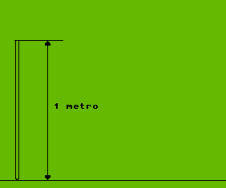
E.Torricelli - 1608 - 1647 -
The Torricelli and Viviani experiment
- 1643 -

V. Viviani -1622 - 1703 -

Were Evangelista Torricelli and Vincenzo Viviani, two followers of Galileo, to find out the lift pump's enigma.
To repeat their famous experiment (please see the animation), you must fill an empty glass tube, sealed at one end, with mercury.
Then you must partially fill a glass cup (with mercury).
Afterwards, you must cover the open end with a finger, invert it, and plunge it into the mercury in the dish.
Now, take off your finger from the end of the tube. The mercury will then run out of the tube into the dish until the weight of the column of mercury in the tube exactly balances the outside air pressure.
The mercury in the tube will rise when the air pressure increases and will fall when it decreases. The exact measure of the air pressure at any moment is the height of the mercury in the tube above the level of the mercury in the dish.
Under standard conditions at sea level, the height will be 29.92 inches or 76 centimetres.
Vincenzo Viviani was the first man to assume that the mercury descent was stopped by the air weight (pressure).
When the experiment is over, in the glass tube over the mercury there is nothing !!!
THEN THE VACUUM CAN EXIST !
The enigma of lift pump is found out: the water rises in the pump pushed by the air weight (pressure). The height of suction is, in theory, 10,33 metres because the air weight at the sea level is 1,033 Kg/cm².
Pratically an height of nine metres is already exceptional.
This experiment was the first step on the road which led to the invention of the steam engine. The first steam engines were "atmospheric engines" because their active stroke was made by the air pressure.
In this experiment, Torricelli used mercury which is more than 13 times as heavy as water.
A water barometer would require a tube more than 30 feet long and the water, of course, would freeze at winter temperatures.
Furthermore, water and most other common liquids release vapor which would decrease the vacuum at the top of the tube, whereas cold mercury releases very little vapor.
A glass tube, sealed at one end, is filled with mercury. Then a glass dish is partially filled with mercury.
Cover the open end of the tube with a finger, invert it, and plunge it into the mercury in the dish.
Mercury will then run out of the tube into the dish until the weight of the column of mercury in the tube exactly balances the outside air pressure.
Under standard conditions at sea level, the height will be 29.92 inch or 76 centimetres.
This experiment is important in science and technology history.
The first steam engines (Papin, Newcomen) were "atmospheric engines".
The active stroke of these engines was made by the atmospheric pressure.